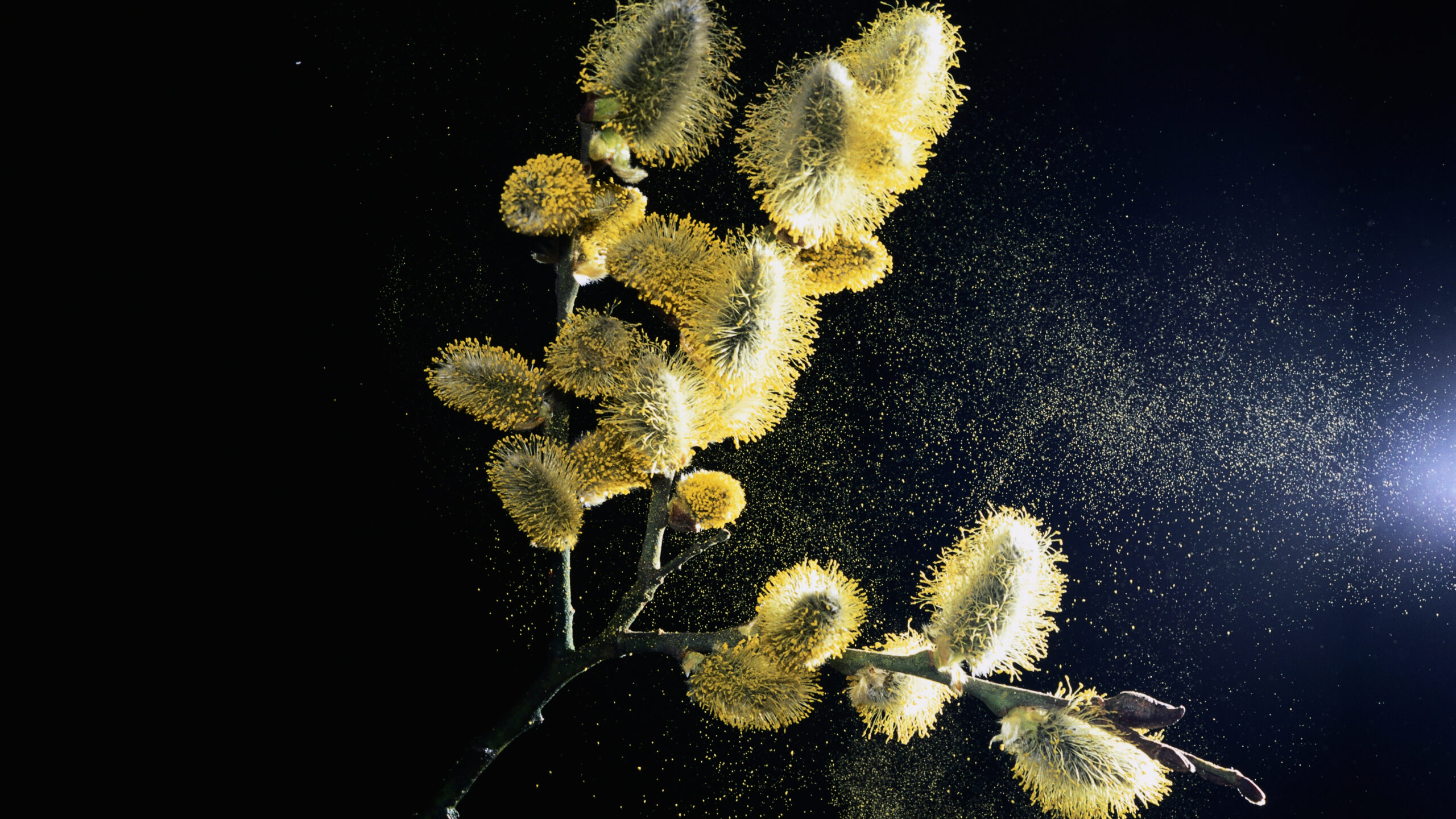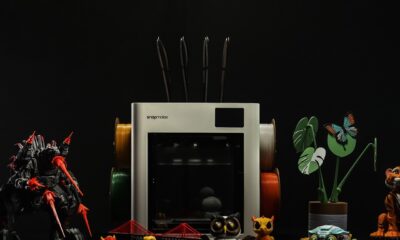Science
Scientists Transform Pollen into Eco-Friendly Materials

Research at Singapore’s Nanyang Technological University is turning traditional views on pollen upside down. Under the guidance of Nam-Joon Cho, scientists are exploring innovative applications for pollen, a material often overlooked as mere dust. After a decade of research, Cho and his team have developed techniques to modify pollen’s rigid outer shell, transforming it into a versatile microgel that can potentially revolutionize sustainable materials, including paper, sponges, and films.
The pollen used in this research is not just the allergenic nuisance familiar to many; it is a valuable biomaterial with a wide range of applications. Cho, who coauthored a comprehensive overview on pollen’s potential in the 2024 Annual Review of Chemical and Biomolecular Engineering, emphasizes that pollen can be much more than a seasonal irritant. “A lot of people think of pollen as useless dust,” he states. “But it has valuable applications if you know how to work with it.”
Pioneering Techniques for Pollen Transformation
To manipulate pollen for practical use, researchers first remove the sticky lipid coating through a process known as defatting. This step is crucial for creating hollow capsules that can be utilized in drug delivery systems, as articulated by Noemi Csaba, a nanotechnology researcher at the University of Santiago de Compostela. She notes the rarity of researchers focusing on pollen’s potential, calling it “very, very interesting.”
A significant breakthrough occurred in 2020 when Cho’s team discovered that incubating pollen in an alkaline solution of potassium hydroxide at 80° Celsius (176° Fahrenheit) could alter its surface chemistry. This change allows the once rigid pollen grains to absorb water, transforming them into a pliable microgel similar to Play-Doh. According to Shahrudin Ibrahim, a research fellow in Cho’s lab, this transformation opens up a myriad of applications.
With the ability to form complex structures, this microgel can be cast into films or papers that are both strong and flexible. Importantly, it is sensitive to environmental changes such as pH and humidity, allowing for smart materials that could respond dynamically to their surroundings.
Applications and Future Prospects
The new pollen-based materials show promise for various applications. For example, they could be utilized in smart devices designed to react to environmental stimuli, as well as in wearable health trackers to monitor vital signs. The natural UV protection offered by pollen could also enable its use as a substrate for solar cells and other optoelectronic devices.
Cho’s lab has successfully created paper from pollen that can be printed on, presenting a sustainable alternative to conventional paper, which is resource-intensive and harmful to forests. Traditional paper production consumes up to 13 liters of water for each page, while pollen, which is released in abundance from seed-producing plants, requires significantly fewer resources for processing.
In addition to paper, Cho’s research team has developed freeze-dried pollen microgel that can form porous sponges, suitable for applications ranging from tissue engineering scaffolds to oil spill absorption.
Cho and his team mainly work with sunflower and camellia pollen, which they source inexpensively from bee pollen mixtures. The alkaline hydrolysis method they employ is versatile and could potentially be applied to a wide variety of plant species. With a single sunflower floret producing between 25,000 and 67,000 pollen grains each summer, the availability of this resource is abundant.
While pollen-based products are still in the development stage, Ibrahim stresses the importance of anticipating challenges and finding sustainable solutions. Compared to other biomaterials, such as chitosan and cellulose, which necessitate the destruction of crustaceans or trees, pollen harvesting is significantly less invasive. “We’re not destroying the plant,” he explains. “We’re not even destroying the flowers.”
As research continues, the possibilities for pollen as a sustainable material are becoming clearer, offering exciting prospects for the future of eco-friendly innovations.
-

 Science3 months ago
Science3 months agoToyoake City Proposes Daily Two-Hour Smartphone Use Limit
-

 Top Stories3 months ago
Top Stories3 months agoPedestrian Fatally Injured in Esquimalt Collision on August 14
-

 Health3 months ago
Health3 months agoB.C. Review Reveals Urgent Need for Rare-Disease Drug Reforms
-

 Technology3 months ago
Technology3 months agoDark Adventure Game “Bye Sweet Carole” Set for October Release
-

 World3 months ago
World3 months agoJimmy Lai’s Defense Challenges Charges Under National Security Law
-

 Lifestyle3 months ago
Lifestyle3 months agoVictoria’s Pop-Up Shop Shines Light on B.C.’s Wolf Cull
-

 Technology3 months ago
Technology3 months agoKonami Revives Iconic Metal Gear Solid Delta Ahead of Release
-

 Technology3 months ago
Technology3 months agoApple Expands Self-Service Repair Program to Canada
-

 Technology3 months ago
Technology3 months agoSnapmaker U1 Color 3D Printer Redefines Speed and Sustainability
-

 Technology3 months ago
Technology3 months agoAION Folding Knife: Redefining EDC Design with Premium Materials
-

 Business3 months ago
Business3 months agoGordon Murray Automotive Unveils S1 LM and Le Mans GTR at Monterey
-

 Technology3 months ago
Technology3 months agoSolve Today’s Wordle Challenge: Hints and Answer for August 19









